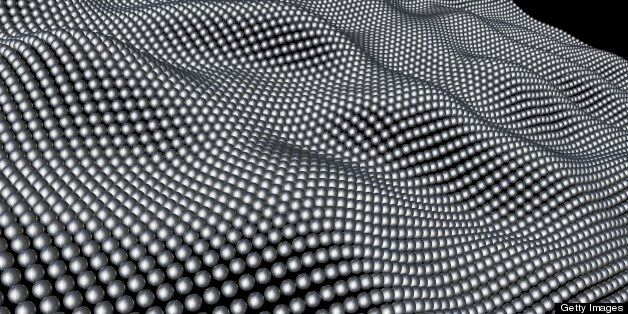
The futuristic material graphene is often cited as a solution for, well, virtually everything -- from higher density batteries to solar cells and 'ultracapacitors' for faster computing.
And it deserves its Nobel Prize-winning reputation. For while it is still pretty difficult and expensive to make, graphene's properties are extraordinary. At just one carbon atom thick and with a naturally occurring, regular, hexagonal composition, it is both the strongest and most conductive material ever made.
According to one researcher, it would take an elephant balanced on a pencil to break through a layer of graphene as thick as cling film.
Now a new variation on the same material is being touted as a possible solution to water pollution.
Boron nitride, also known as 'white graphene', is similar to normal graphene in that it is made of very thin sheets of regularly spaced atoms.
And according to a report in Nature Communications, it is able to absorb massive amounts of pollutants like industrial waste chemicals or oil, and then be re-used after driving out the chemicals by igniting it.
In fact the study says the sheets could pick up 33 times their own weight of ethylene glycol, and 29 times its weight in engine oil. The material, which is produced in single-atom sheets that resemble powder to our eyes, floats on water, acting as a virtually perfect sponge for pollutants.
"All these features make these porous nanosheets suitable for a wide range of applications in water purification and treatment," said the authors of the study.
Unfortunately there's a snag - cost.
So far it's not possible to make white graphene cheaply enough or in large enough quantities to make it an option in the real world market. But that may change in the future - leading to faster clean-up of chemical spills.